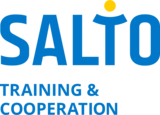ETS Competence Model for Trainers
The Steering Group of the European Training Strategy of Youth in Action requested (SALTO T&C RC) and Gisele Evrard-Markovic (at that time freelance trainer) to develop a competence model targeting trainers, youth workers and youth leaders working on an international level. Arturas Deltuva later on joined the team for the Model's further developments.
The ETS Competence Model defines seven competence areas:
- Understanding and facilitating individual and group learning processes
- Learning to learn
- Designing educational programmes
- Cooperating successfully in teams
- Communicating meaningfully with others
- Intercultural competence
- Being civically engaged
On the right-hand side of this text, you can find the booklet 'Tools to get started'. This publication gathers information about the Competence Model such as its approach, its structure, the values behind, the educational principles, and the glossary of terms, which explains key definitions and is helpful in order to better understand how they are used in the context of the ETS. This publication can be complemented by the ''Amended version'' of the Competence Model which gathers the content of each competence area (also available as posters - see below)
In the list of downloadable documents, you can also see the posters of each of the competence areas. The first pdf file contains an overview of the competence areas, followed by each of the competences, and the last file contains all posters in one document. The documents are optimised for printing on A2.
A group of experts (Gisele Evrard-Markovic, Arturas Deltuva and ) has worked on a set of guidelines to be consulted when working with the Competence Model. The guidelines include a series of tools that can be downloaded (available on the rigth-hand side):
- A card game 'Hold your Aces' developed by Gabi Steinprinz, based on the ETS Competence Model for Trainers. The game includes 4 methods to support self-reflection, a box, and the cards.
- 'Practical Tools and Methods' (also available to download) which proposes a few exercises on how to work with the ETS Competence Model in teams, individually, or for training providers / organisers.
Together with the Tools to get Started and the Posters, these documents form the Guidelines.
All this material is free to be used but we kindly ask you to always mention the authors or the source.
Downloads
The following downloads are available:
- ETS Competence Model Amended version
- Tools to get started - information about the model - Guidelines pack ETS competence model for traine
- Practical Tools & Methods - cover page - Guidelines pack ETS competence model for trainers
- Practical Tools & Methods - content - exercices based on the model - Guidelines pack ETS competence
- Self-assessment form final
- 3L - assessment according to competences
- 3L - assessment according to competence criteria
- 3L - assessment according to competence area
- Card Game 'Hold your Aces' - methods - Guidelines pack ETS competence model for trainers
- Card Game 'Hold your Aces' - box - Guidelines pack ETS competence model for trainers
- Card Game 'Hold your Aces' - cards - Guidelines pack ETS competence model for trainers
- Competence Model for Trainers - revised poster - overview
- Competence Model for Trainers - Intercultural competence
- Competence Model for Trainers - being civically engaged
- Competence Model for Trainers - Communicating meaningfully with others
- Competence Model for Trainers - Cooperating successfully in teams
- Competence Model for Trainers - Learning to Learn
- Competence Model for Trainers - Designing educational programmes
- Competence Model for Trainers - Understanding & Facilitating Learning
- Competence Model for Trainers - all posters
